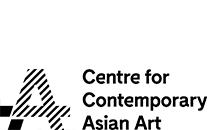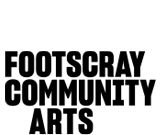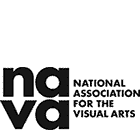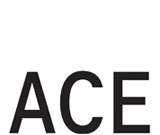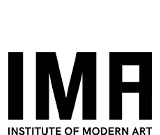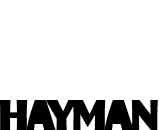Pied Beauty: The Paintings of Emma McIntyre
With a bold move from New Zealand to Los Angeles, Emma McIntyre is a young artist taking the international artworld by storm. With her fresh and witty abstract paintings and their clever takes on colour, gesture and art history, top galleries from New York to Paris are taking note.

Image credit: Installation view, Emma McIntyre, Direct smear atlas, 2022, oil on linen, 248.92 x 203.2 cm, in L’Alamanach, 2023, Le Consortium Museum, Dijon, France. Photo: Rebecca Fanuele. Courtesy of Le Consortium
“Glory be to God for dappled things –” runs Gerard Manley Hopkins’ poem ‘Pied Beauty’. “For skies of couple-colour as a brinded cow; / For rose-moles all in stipple upon trout that swim …” These are words that come to mind while looking at the paintings of Emma McIntyre.
McIntyre was born and raised in Auckland, New Zealand/Aotearoa, where she earned her Bachelor of Visual Art from AUT and an MFA from the Elam School of Fine Arts at Auckland University, before relocating to California and gaining another MFA from the ArtCenter College of Design in LA.
LA is now home for the young artist. “I love LA,” she says. “It’s a very strange and complicated place, of course not at all how Hollywood portrays it, nor how anyone could imagine it after a short holiday here. It’s ultimately unknowable, and my idea of it is in constant motion.” It’s a vast, sprawling, decentred city, and McIntyre is fascinated by the way its small, passionate, individual art scenes interlock. “I can make the kind of work I want to make and there will be people that will be interested, and there will be critical dialogue around it,” she says.
After a stint in New York while in her early 20s, McIntyre wanted to return to the US to study, and a Fulbright Scholar Award made that possible.
“I settled on ArtCenter, partly as one of my long-time favourite painters Laura Owens is core faculty at the MFA program there. I went on a whim and I’m so glad I did, it was an incredible program, led by Bruce Hainley at the time. I had really amazing teachers, especially Richards Hawkins and Bruce Hainley.”
Being a world culture centre, LA is increasingly a major node of the international art world, due to the reputation of its MFA programs (in part a legacy of Hollywood) and as home to the West Coast branches of important New York dealers. Florence Bonnefous of French gallery Air de Paris saw McIntyre’s first LA show and now represents her. The artist’s first Paris show was in 2021 and since led to inclusion in L’Almanach, Le Consortium Museum’s biennale in Dijon.
There are a lot of art-historical allusions in McIntyre’s work, all in careful synthesis. They range from dominant Neo‑expressionism through to figurative movements: Impressionism, Romanticism, even the proscenium staging of the rococo. There is something of Twombly in the counterpoint of gestural abstraction and suggestive poetic titles, and even a hint of Joan Mitchell and Odilon Redon. The common themes are colour and light.
“I have my touch points in each movement,” says McIntyre, “and Frankenthaler, Mitchell, Twombly, Bonnard, Watteau in particular are artists I come back to again and again. I am also very indebted to German painting. I look to Polke more than anyone else at the moment, and although my project is vastly different from his, his investment in paint as a material and his interest in pushing materiality to the absolute limits, as well as his interest in alchemy, is influential. Someone said, ‘nothing is more alien to Polke than definitive clarity,’ which I absolutely relate to – I’m interested in a painting practice being a slippery, shifting, unnameable thing most of the time. I also look to the next generation of German painters who all synthesise him in some way – Michaela Eichwald, Albert Oehlan and Amelie von Wufflen.” Jutta Koether, Charline von Heyl, Jana Euler, Walter Price and Josh Smith are also influences.
One noticeable thing is that McIntyre is less about postmodern irony than earnest authenticity. “I’m reticent to think of myself as a Neo-expressionist though,” she says, “as to me it infers a kind of unfettered expressive outpouring, which doesn’t align with my experience of making a painting.” In the process, the artist “toggles” between different modes, starting with what she calls the “alchemical,” pouring paint or applying a metal paint like iron oxide, letting pigment and substrate do their thing. “The painting from then on builds as a kind of call and response; moments of spontaneous, expressive responses to the poured first layer are tempered with more intentional, improvisatory modes of problem solving or, conversely, complicating gestures.”
“Believe in the mark,” she says. “Make a flirty mark, one that brushes up against, rubs up against, one that uses its whole body to seduce. It’s easy to understand painting as witchcraft when, with a casual flick of the wrist, the wand-like animal-hair tipped brush in your hand reveals a cosmos of relative marks spanning millennia … I aim for moments of sublime that are interrupted by reminders of the materiality of the thing, the fact that it is a mere painting – a reason I often leave gesso exposed or add a framing device such as a dot frame within the painting.”
Aside from the high-keyed palette and sensuosity of gesture, a motif appearing in many McIntyre paintings are polka dots. These first emerged during McIntyre’s first MFA in Auckland.
“At that point,” she says”. I was working with the grid as a structuring principle, which at the time I was thinking about in relation to textile and patterning. I liked the awkward, slightly gaudy nature of polka dots in painting. It felt wrong in a good way. I was thinking about how a textile pattern in painting does or does not conform to the body. It was the beginning of my deep dive into Bonnard, Vuillard and the Decorative and Nabis artists.
“The grid no longer has the same presence in my work, but I am still interested in the flirtation with the decorative, and polka dots can provide these decorative moments, or moments of flatness and structure to anchor a composition. My work can evoke print making, so the polka dots or other patterning devices can be used to tap into that vocabulary, especially as I often make the patterns with wallpaper rollers, stamps and stencils.”
Critics in ArtForum, Frieze, Flash Art and elsewhere have been effusive about McIntyre’s work, but it would be apropos to let the artist consider how she would like her work to be understood.
“I’m on a journey with the work. Each painting is seeded by previous works and I hope that they are always offering me something new; I’m not interested in settling in one place and endlessly reproducing the same set of ideas and gestures.
“I don’t want the work to be prescriptive, so I’m not sure I have a straightforward answer to this question. I hope that people understand that the works contain multitudes, and that they can experience the sensual immediacy as well as the cerebral qualities that start to unfurl with time. I would want an audience to understand them as a deep engagement with painting, as a material and a history, and not to experience the opacity as a block. I want people to appreciate that painting is nonverbal and will always contain layers of hidden meaning. Apparently, some viewers of my recent show at Château Shatto [in LA] have been having a very emotional reaction to the new paintings – I’m not sure what to make of that yet but I am pleased by it.”
Emma McIntyre is showing in L’Almanach, an international biennial exhibition at Le Consortium Museum, Dijon, France until September 17, 2023.
leconsortium.fr
Emma McIntyre is represented by Coastal Signs, Tāmaki Makaurau Auckland, Aotearoa New Zealand, Château Shatto, Los Angeles, and Air de Paris, Romainville, France.
coastal-signs.net
chateaushatto.com
airdeparis.com

Image credit: Installation view, Emma McIntyre, Epitaph for fire and flower, 2023 oil on linen, 203.2 x 248.9 cm; Rosyfingered, 2022, oil and iron oxide on linen, 45.7 x 50.8 cm; in Pearl Diver, 2023, Château Shatto, Los Angeles. Courtesy Château Shatto

Image credit: Emma McIntyre, Monograph of a stain, 2022, oil, acrylic and indian ink on linen 250.2 x 198.1 cm. Courtesy Château Shatto

Image credit: Emma McIntyre, The blush, 2022, oil and iron oxide on linen, 30.5 x 35.6 cm. Courtesy Château Shatto
This article was originally published in VAULT Magazine Issue 42 (May – Jul).

Click here to Subscribe
















